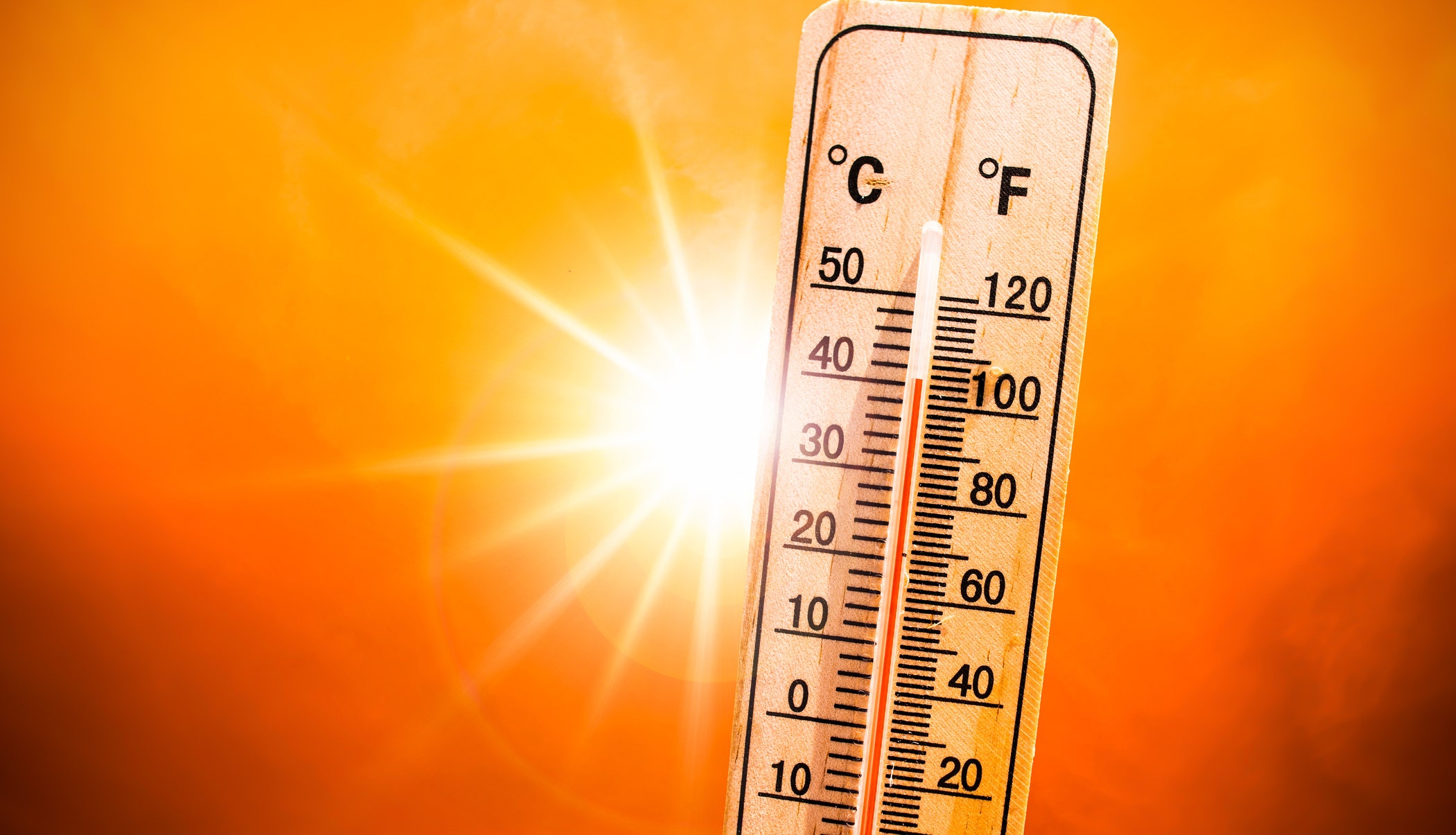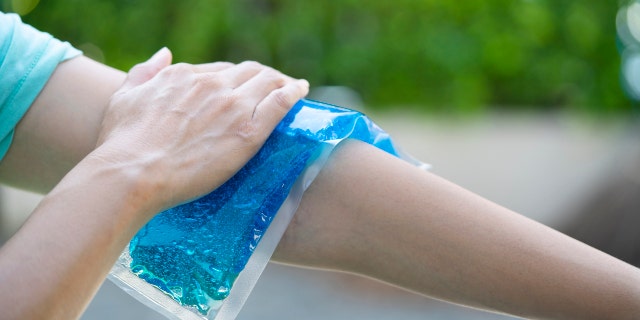Health
Texas postal worker dies while delivering mail in ‘dangerous environment’ with record-high temps

North Texas postal worker Eugene Gates Jr., 66, died on June 20 after he collapsed while delivering mail amid a dangerously high heat index, according to multiple reports.
The heat index that day had reached 115 degrees Fahrenheit, the highest recorded temperature in the Dallas-Fort Worth area since 1980, according to a local news outlet.
A homeowner rushed outside to perform CPR after Gates lost consciousness, but he was later pronounced dead at Texas Health Presbyterian Hospital.
The cause of death has yet to be determined by the medical examiner.
SWELTERING TEXAS HEAT WAVE SCORCHES SOUTHERN CITIES, BRINGING TRIPLE-DIGIT TEMPERATURES
Gates served in the United States Army. He later traded his uniform for another life of service for the United States Postal Service (USPS), as noted in a statement.
He was a member of Lone Star Branch 132 in the National Association of Letter Carriers. During his 36 years of delivering mail, Gates was “beloved by his colleagues and customers,” the statement added.
North Texas postal worker Eugene Gates Jr., 66, died on June 20 after he collapsed in a yard while delivering mail amid a dangerously high heat index. (iStock)
“America’s letter carriers often work in dangerous environments,” National Association of Letter Carriers President Brian L. Renfroe, based in Washington, D.C., said in a recent statement.
“The most important and immediate step that can be taken to protect anyone from the hazard of excessive heat is to learn as much as possible about this potentially life-threatening hazard — particularly the warning signs of heat illness,” he continued.
HEAT WAVE RESPONSIBLE FOR MULTIPLE DEATHS ACROSS US
Some organizations, such as the World Health Organization (WHO), claim that climate change is causing steadily rising temperatures and increasing exposure to heat.
“Heat stroke can occur whenever one is exposed to excessive heat without protection, cooling measures or fluid and electrolyte repletion,” Carl Allamby, M.D., an emergency medicine physician at Cleveland Clinic in Cleveland, Ohio, told Fox News Digital.
To prevent heat exhaustion and heat stroke, it’s vital to understand the warning signs.
What’s the heat index?
The heat index measures how hot your body feels when considering both the humidity and the outside temperature, according to the National Weather Service.

“America’s letter carriers often work in dangerous environments,” National Association of Letter Carriers President Brian L. Renfroe, who is based in Washington, D.C., said in a recent statement. (iStock)
When it gets too hot outside, the body starts to sweat, which has a cooling effect when perspiration starts to evaporate.
As the relative humidity increases, however, it takes longer for the sweat to evaporate, causing people to feel warmer.
Understanding heat exhaustion
Heat exhaustion occurs when the body loses too much salt and water, often through excessive sweating, according to the Centers for Disease Control and Prevention (CDC).
The loss of water through sweating and evaporation can cause dehydration and the loss of electrolytes, Allamby said.
BE WELL: STAY HYDRATED IN THE SUMMER HEAT WITH THESE SMART TIPS
“Symptoms manifest as an elevated heart rate (tachycardia), sweating, nausea/vomiting, headache, weakness and dizziness,” he noted.
Some other warning signs include feeling thirsty, sweating profusely or having a decreased urine output, the CDC said.
Symptoms of heat exhaustion include elevated heart rate, sweating, nausea, vomiting, headache, weakness and dizziness.
“These symptoms are usually reversible by removing the person from the heated environment, providing liquids containing electrolytes and using evaporative cooling methods, such as spraying them with water and putting them in front of a fan,” the doctor added.
When heat exhaustion symptoms are ignored, they can progress to heat stroke, Allamby warned.
If symptoms worsen, persist for more than one hour or lead to vomiting, it’s important to seek immediate medical attention, the CDC warns.
Signs of heat stroke
Heat stroke is the most serious heat-related illness. It occurs when the body’s sweating mechanism breaks down and the person can’t cool down, according to the CDC.
“This is where the person’s temperature elevates above 40 degrees Celsius or 104 degrees Fahrenheit, [leading to] neurological changes such as confusion, difficulty walking, seizures, slurred speech, delirium and coma,” Allamby said. “They may also stop sweating at this point.”
Heat stroke can be fatal, especially if left untreated.
This condition occurs more often in children and the elderly, who may not have a structured environment to protect themselves from the heat, the doctor added.
Heat stroke “is usually fatal if not treated — but even with treatment, a significant amount of people will die as a result,” Allamby warned.

Heat stroke is the most serious heat-related illness, which occurs when the body’s sweating mechanism breaks down and the person can’t cool down, according to the CDC. (iStock)
A temperature above 100 degrees Fahrenheit may indicate heat exhaustion, while a temperature above 104 degrees Fahrenheit could be a sign of heat stroke, Healthline’s website explained.
When to seek medical attention
Heat stroke is a medical emergency, per the CDC, so it’s always important to call 911 when someone shows signs of the condition.
Use cooling measures while awaiting help. This includes getting the person into shade or a cool environment, said Allamby.
CLICK HERE TO SIGN UP FOR OUR HEALTH NEWSLETTER
“Time is of the essence, and the earlier treatment starts, the better the chance of survival and recovery,” he added.
The most effective treatment for heat stroke is immersion in a cold-water bath, Allamby said.

An alternative treatment for heat stroke is to apply ice packs under the arms, in the groin area and around the neck. (iStock)
An alternative treatment is to apply ice packs under the arms, in the groin area and around the neck.
“In the hospital, we can give cold [intravenous] fluids and provide other invasive techniques if needed, so getting them to an emergency department right away is of utmost importance,” Allamby explained.
“I hope this story helps to remind us to watch out for those who are most vulnerable to heated environments such as this mail carrier, children — especially during the sports training season — and the elderly,” he said.
“Please check on your neighbors and the ones you love — and maybe you can save a life.”

Health
Semaglutide Pills and Injections Vs. Drops: Experts Weigh In | Woman's World

Sign Up
Create a free account to access exclusive content, play games, solve puzzles, test your pop-culture knowledge and receive special offers.
Already have an account? Login
Use left and right arrow keys to navigate between menu items.
Use escape to exit the menu.
Health
Jennifer Hudson Lost 80-Lbs Without Depriving Herself—Learn Her Secrets

Sign Up
Create a free account to access exclusive content, play games, solve puzzles, test your pop-culture knowledge and receive special offers.
Already have an account? Login
Use left and right arrow keys to navigate between menu items.
Use escape to exit the menu.
Health
Kennedy’s Plan for the Drug Crisis: A Network of ‘Healing Farms’

Though Mr. Kennedy’s embrace of recovery farms may be novel, the concept stretches back almost a century. In 1935, the government opened the United States Narcotic Farm in Lexington, Ky., to research and treat addiction. Over the years, residents included Chet Baker and William S. Burroughs (who portrayed the institution in his novel, “Junkie: Confessions of an Unredeemed Drug Addict”). The program had high relapse rates and was tainted by drug experiments on human subjects. By 1975, as local treatment centers began to proliferate around the country, the program closed.
In America, therapeutic communities for addiction treatment became popular in the 1960s and ’70s. Some, like Synanon, became notorious for cultlike, abusive environments. There are now perhaps 3,000 worldwide, researchers estimate, including one that Mr. Kennedy has also praised — San Patrignano, an Italian program whose centerpiece is a highly regarded bakery, staffed by residents.
“If we do go down the road of large government-funded therapeutic communities, I’d want to see some oversight to ensure they live up to modern standards,” said Dr. Sabet, who is now president of the Foundation for Drug Policy Solutions. “We should get rid of the false dichotomy, too, between these approaches and medications, since we know they can work together for some people.”
Should Mr. Kennedy be confirmed, his authority to establish healing farms would be uncertain. Building federal treatment farms in “depressed rural areas,” as he said in his documentary, presumably on public land, would hit political and legal roadblocks. Fully legalizing and taxing cannabis to pay for the farms would require congressional action.
In the concluding moments of the documentary, Mr. Kennedy invoked Carl Jung, the Swiss psychiatrist whose views on spirituality influenced Alcoholics Anonymous. Dr. Jung, he said, felt that “people who believed in God got better faster and that their recovery was more durable and enduring than people who didn’t.”
-
/cdn.vox-cdn.com/uploads/chorus_asset/file/25822586/STK169_ZUCKERBERG_MAGA_STKS491_CVIRGINIA_A.jpg)
/cdn.vox-cdn.com/uploads/chorus_asset/file/25822586/STK169_ZUCKERBERG_MAGA_STKS491_CVIRGINIA_A.jpg) Technology1 week ago
Technology1 week agoMeta is highlighting a splintering global approach to online speech
-

 Science1 week ago
Science1 week agoMetro will offer free rides in L.A. through Sunday due to fires
-
/cdn.vox-cdn.com/uploads/chorus_asset/file/23935558/acastro_STK103__01.jpg)
/cdn.vox-cdn.com/uploads/chorus_asset/file/23935558/acastro_STK103__01.jpg) Technology1 week ago
Technology1 week agoAmazon Prime will shut down its clothing try-on program
-

 News1 week ago
News1 week agoMapping the Damage From the Palisades Fire
-
/cdn.vox-cdn.com/uploads/chorus_asset/file/25826211/lorealcellbioprint.jpg)
/cdn.vox-cdn.com/uploads/chorus_asset/file/25826211/lorealcellbioprint.jpg) Technology7 days ago
Technology7 days agoL’Oréal’s new skincare gadget told me I should try retinol
-
/cdn.vox-cdn.com/uploads/chorus_asset/file/25832751/2192581677.jpg)
/cdn.vox-cdn.com/uploads/chorus_asset/file/25832751/2192581677.jpg) Technology4 days ago
Technology4 days agoSuper Bowl LIX will stream for free on Tubi
-

 Business5 days ago
Business5 days agoWhy TikTok Users Are Downloading ‘Red Note,’ the Chinese App
-
/cdn.vox-cdn.com/uploads/chorus_asset/file/25835602/Switch_DonkeyKongCountryReturnsHD_scrn_19.png)
/cdn.vox-cdn.com/uploads/chorus_asset/file/25835602/Switch_DonkeyKongCountryReturnsHD_scrn_19.png) Technology2 days ago
Technology2 days agoNintendo omits original Donkey Kong Country Returns team from the remaster’s credits













